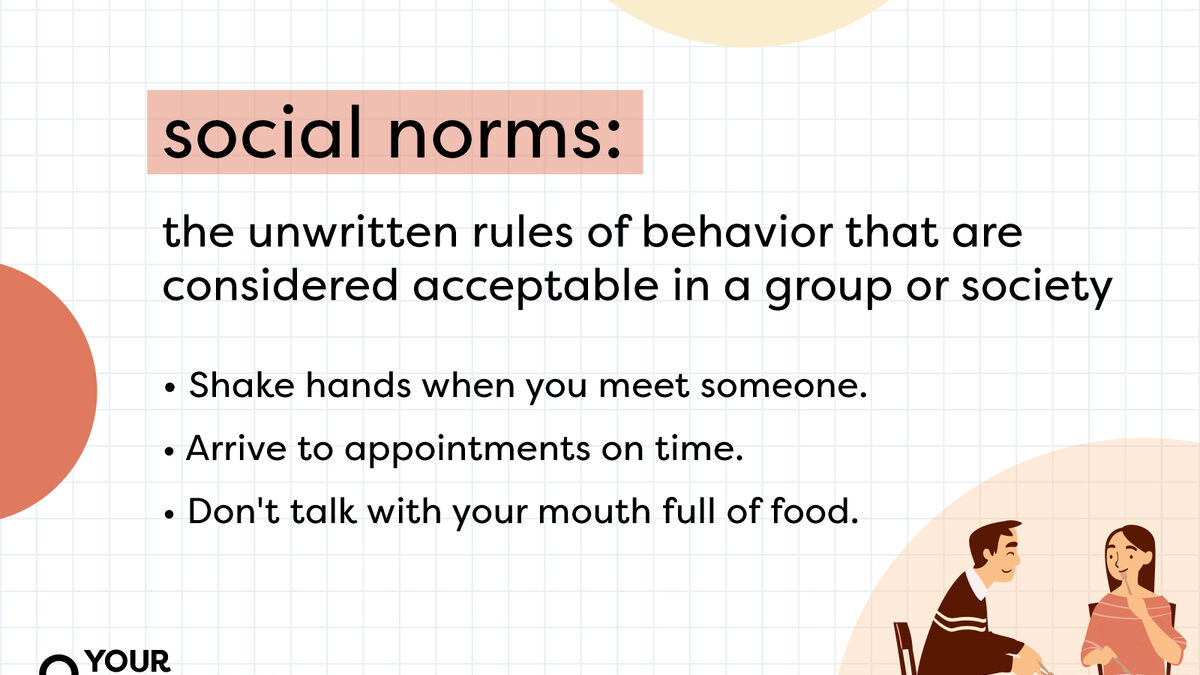Have you ever wondered why we shake hands when we meet someone, or why we cover our mouths when we cough? These seemingly mundane actions are actually deeply ingrained in our cultural fabric, serving as silent guides for our everyday behavior. These are examples of folkways, the unwritten rules and customs that dictate our social interactions, shaping our lives in subtle yet powerful ways.

Image:
Folkways are the invisible threads that weave together the tapestry of human societies. They provide a framework for navigating social situations, fostering a sense of belonging, and maintaining order within a community. Understanding folkways is crucial for navigating different cultures and fostering meaningful connections across diverse groups.
The Essence of Folkways: Unwritten Rules Guiding Our Behavior
Defining Folkways: Subtle yet Powerful
Folkways are informal social norms, passed down through generations, that guide our everyday actions. They are not laws or formal rules, but rather customary patterns of behavior that are widely accepted and expected. Unlike laws, violating folkways generally doesn’t result in legal punishment, but rather social disapproval or embarrassment.
Examples of Folkways in Daily Life:
We encounter folkways in every aspect of our lives, from greeting rituals to dining etiquette. Here are some common examples:
- Greeting rituals: Handshakes, hugs, bowing, or a simple “hello” are all examples of folkways that dictate how we initiate social interactions.
- Table manners: Using utensils, passing food to the right, and avoiding noisy eating are all folkways that govern our dining experiences.
- Personal space: The distance we maintain from others in different social situations, referred to as “proxemics,” is a folkway that varies across cultures.
- Dress codes: Fashion choices, including clothing styles and accessories, often reflect and reinforce the folkways of a particular group.
- Language and communication: The use of slang, idioms, and specific language patterns are ingrained folkways that define the communication style of a society.

Image: childhealthpolicy.vumc.org
Folkways Across Cultures: A Tapestry of Diversity
The Role of Culture in Shaping Folkways:
Folkways are deeply rooted in cultural context, reflecting the values, beliefs, and traditions of a particular society. They evolve over time, adapting to changing social, economic, and technological landscapes. For instance, the concept of “personal space” varies significantly across cultures, reflecting different values around intimacy and social interaction.
Examples of Cultural Differences in Folkways:
- Greetings: In some cultures, a handshake is the standard greeting, while in others, a bow or a hug is preferred.
- Dining etiquette: Using chopsticks, sharing dishes, or waiting for the elders to start eating are all examples of culturally diverse folkways related to dining.
- Dress codes: The level of formality in clothing, the colors, and specific garments worn can vary significantly across cultures.
- Time perception: The concept of “time” can be interpreted differently in various cultures, with some societies emphasizing punctuality, while others prioritize flexibility.
Understanding and Respecting Folkways: A Bridge to Cultural Understanding
Why Folkways Matter:
Understanding folkways is essential for building strong and meaningful relationships across cultures. When we recognize and respect the unwritten rules that guide behavior in different societies, we demonstrate sensitivity and empathy, fostering mutual understanding and trust.
Navigating Cultural Differences:
Whether traveling to a new country, interacting with colleagues from different backgrounds, or simply navigating a diverse neighborhood, being aware of folkways can prevent misunderstandings, foster positive interactions, and create a sense of belonging. By paying attention to subtle cues, observing local customs, and asking questions when unsure, we can bridge cultural gaps and create a more harmonious and enriching experience.
Folkways in the Modern World: Evolution and Adaptation
Folkways in a Globalized World:
In our increasingly interconnected world, folkways are constantly evolving, adapting to the influence of globalization, technology, and changing social values. This dynamic interplay can lead to interesting tensions and adaptations, as traditional customs intersect with modern trends.
Modern Examples of Shifting Folkways:
- Social media etiquette: Folkways have emerged around the use of social media platforms, shaping how we communicate, share information, and interact online.
- Environmental consciousness: The growing awareness of environmental issues has influenced folkways related to consumerism, resource consumption, and sustainable practices.
- Globalized cuisine: The fusion of culinary traditions has led to a shift in food preferences and dining habits, blurring lines between traditional folkways and new experiences.
Folkways Examples
The Enduring Power of Folkways: A Legacy Connecting Us
Folkways are more than just quaint customs; they are the foundation of social cohesion, reflecting the shared values and beliefs that bind communities together. They are a window into the history and cultural heritage of a society, offering insights into how people have lived, interacted, and built their world for generations.
As we continue to navigate an increasingly complex and diverse global landscape, understanding and respecting folkways remains crucial. It is through these seemingly simple, yet deeply ingrained practices that we can bridge cultural divides, foster understanding, and build a more inclusive and harmonious world.
So, the next time you shake hands, cover your mouth when you cough, or observe a different way of interacting in a new environment, remember that you are participating in a rich and enduring tradition – a tapestry of folkways that connects us all.






